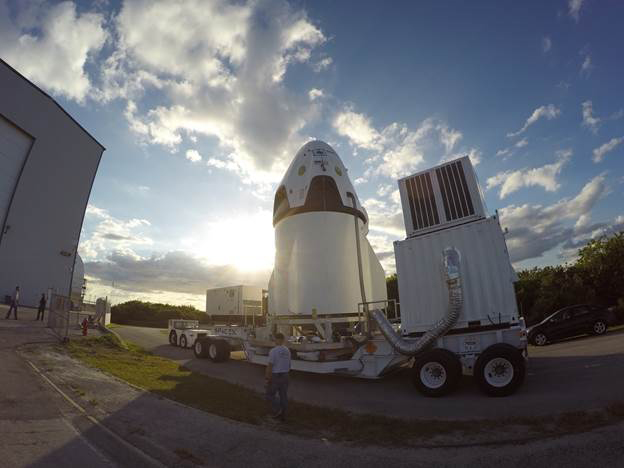TORONTO – For the past four years, the United States has relied solely on the Russians to get them to and from the space station, at a hefty price tag of about $17 million a seat. But that’s all about to change.

In September 2014, NASA announced that Boeing and SpaceX won the bid to build the next generation of crew vehicle. Both companies have been working to reach a deadline of 2017.
READ MORE: Boeing, SpaceX rides to space will save NASA millions
Now, SpaceX is ready to conduct the first real test of its crewed vehicle from Cape Canaveral, Florida, on Wednesday.
It will not be a manned mission. Nor will it head into space. But it is critical: it’s the pad abort system.
This is the system that is designed to save astronauts should there be a problem upon launch. Just think of it as an ejection seat of sorts. Except that the entire crew vehicle is ejected away from the launch vehicle.
The launch abort system will be fully integrated into the spacecraft. So, instead of the crew being able to be sent to safety only during initial liftoff, they’ll be able to get to safety right until they get into orbit.
The system is fat: SpaceX is using its SuperDraco engines that will be built into the walls of the Dragon 2 crew spacecraft. These rockets are able to produce 120,000 pounds of thrust in under one second. That means that the crew will be sent 100 metres in just two seconds; in five seconds, it can be five kilometres away.
READ MORE: SpaceX unveils spacecraft designed to fly astronauts to space station
No towering rocket will be used in the test. Instead, Dragon 2 will sit atop a stubby housing called a trunk. The eight SuperDracos on the crew capsule will ignite and reach maximum thrust, launching the spacecraft.
After just a half second of vertical flight, the rockets will expend their fuel and the spacecraft will turn toward the ocean, reaching a height of about 1,500 metres. The trunk will then return to Earth. Dragon 2 will splash down in the Atlantic about 2,200 metres downrange of the launch pad.

The test flight will provide valuable information to the engineers at SpaceX, including the proper sequencing of events, trajectory data and both the internal and external environments, ensuring the overall safety of any future crews.
As for the test dummy, whatever you do, don’t call him Buster. Though there had been earlier reports that this was his name, SpaceX has insisted that he is unnamed.
“Buster the Dummy already works for a great show you may have heard of called MythBusters. Our dummy prefers to remain anonymous for the time being.”



Comments